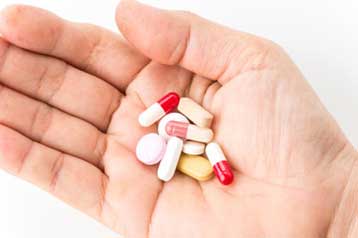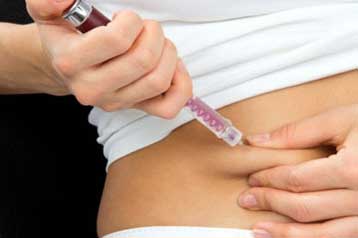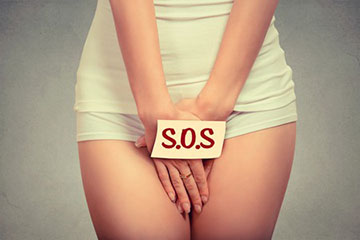Cholera
What is Cholera?
Cholera is an acute, diarrheal illness caused by infection of the intestine with the bacterium Vibrio cholerae. An estimated 3-5 million cases and over 100,000 deaths occur each year around the world. The infection is often mild or without symptoms, but can sometimes be severe. Approximately one in 20 (5%) infected persons will have severe disease characterized by profuse watery diarrhea, vomiting, and leg cramps. In these people, rapid loss of body fluids leads to dehydration and shock. Without treatment, death can occur within hours.
Where is Cholera Found?
The cholera bacterium is usually found in water or food sources that have been contaminated by feces (poop) from a person infected with cholera. Cholera is most likely to be found and spread in places with inadequate water treatment, poor sanitation, and inadequate hygiene.
The cholera bacterium may also live in the environment in brackish rivers and coastal waters. Shellfish eaten raw have been a source of cholera, and a few persons in the United States have contracted cholera after eating raw or undercooked shellfish from the Gulf of Mexico.
How Does a Person Get Cholera?
A person can get cholera by drinking water or eating food contaminated with the cholera bacterium. In an epidemic, the source of the contamination is usually the feces of an infected person that contaminates water and/or food. The disease can spread rapidly in areas with inadequate treatment of sewage and drinking water. The disease is not likely to spread directly from one person to another; therefore, casual contact with an infected person is not a risk for becoming ill.
What are the Symptoms of Cholera?
Cholera infection is often mild or without symptoms, but can sometimes be severe. Approximately one in 20 (5%) infected persons will have severe disease characterized by profuse watery diarrhea, vomiting, and leg cramps. In these people, rapid loss of body fluids leads to dehydration and shock. Without treatment, death can occur within hours.
How Long After Infection Do the Symptoms Appear?
It can take anywhere from a few hours to 5 days for symptoms to appear after infection. Symptoms typically appear in 2-3 days.
Who is Most Likely to Get Cholera?
Individuals living in places with inadequate water treatment, poor sanitation, and inadequate hygiene are at a greater risk for cholera.
What Should I Do If I Think I Have Cholera?
If you think you may have cholera, seek medical attention immediately. Dehydration can be rapid so fluid replacement is essential.
How is Cholera Diagnosed?
To test for cholera, doctors must take a stool sample or a rectal swab and send it to a laboratory to look for the cholera bacterium.
What is the Treatment for Cholera?
Cholera can be simply and successfully treated by immediate replacement of the fluid and salts lost through diarrhea. Patients can be treated with oral rehydration solution, a prepackaged mixture of sugar and salts to be mixed with water and drunk in large amounts. This solution is used throughout the world to treat diarrhea. Severe cases also require intravenous fluid replacement. With prompt rehydration, fewer than 1% of cholera patients die.
Antibiotics shorten the course and diminish the severity of the illness, but they are not as important as receiving rehydration. Persons who develop severe diarrhea and vomiting in countries where cholera occurs should seek medical attention promptly.
Should I Be Worried About Getting Cholera From Others?
The disease is not likely to spread directly from one person to another; therefore, casual contact with an infected person is not a risk for becoming ill.
How Can I Avoid Getting Cholera?
The risk for cholera is very low for people visiting areas with epidemic cholera. When simple precautions are observed, contracting the disease is unlikely.
All people (visitors or residents) in areas where cholera is occurring or has occurred should observe the following recommendations:
- Drink only bottled, boiled, or chemically treated water and bottled or canned carbonated beverages. When using bottled drinks, make sure that the seal has not been broken.
- To disinfect your own water: boil for 1 minute or filter the water and add 2 drops of household bleach or ½ an iodine tablet per liter of water.
- Avoid tap water, fountain drinks, and ice cubes.
Anuncios - Wash your hands often with soap and clean water.
- If no water and soap are available, use an alcohol-based hand cleaner (with at least 60% alcohol).
- Clean your hands especially before you eat or prepare food and after using the bathroom.
- Use bottled, boiled, or chemically treated water to wash dishes, brush your teeth, wash and prepare food, or make ice.
- Eat foods that are packaged or that are freshly cooked and served hot.
- Do not eat raw and undercooked meats and seafood or unpeeled fruits and vegetables.
- Dispose of feces in a sanitary manner to prevent contamination of water and food sources
Is a Vaccine Available to Prevent Cholera?
Currently, there are two oral cholera vaccines available, Dukoral (manufactured by SBL Vaccines) which is World Health Organization (WHO) prequalified and licensed in over 60 countries, and ShanChol (manufactured by Shantha Biotec in India), which is licensed in India and is pending WHO prequalification. Because the vaccine is a two dose vaccine, multiple weeks can elapse before persons receiving the vaccine are protected. Therefore, vaccination should not replace standard prevention and control measures. In addition, CDC does not recommend cholera vaccines for most travelers, nor is the vaccine available in the United States. This is because the available vaccines offer incomplete protection for a relatively short period of time. More information about cholera vaccines
What is the Risk For Cholera in the United States?
In the United States, cholera was prevalent in the 1800s but water-related spread has been eliminated by modern water and sewage treatment systems.
However, U.S. travelers to areas with epidemic cholera (for example, parts of Africa, Asia, or Latin America) may be exposed to the cholera bacterium. In addition, travelers may bring contaminated seafood back to the United States; foodborne outbreaks of cholera have been caused by contaminated seafood brought into the United States by travelers.
Source
Centers for Disease Control and Prevention






